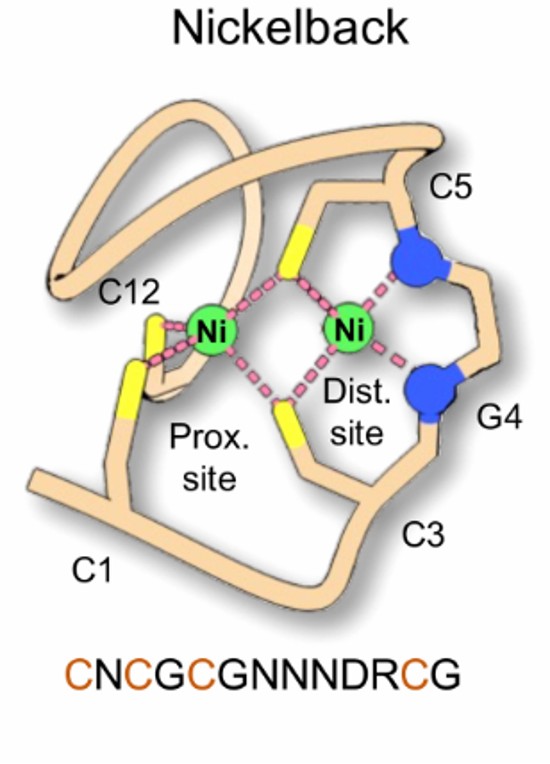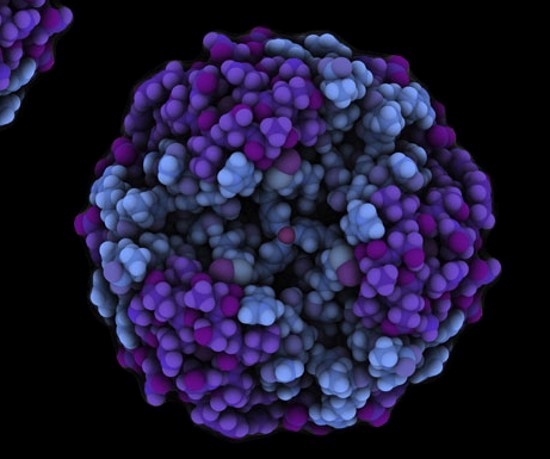What are peptides? They are short chains of amino acids between 2 and 50 in number. They are the precursors to proteins, also called enzymes. These are molecules containing a much greater number of amino acids. Without proteins, the building blocks of life DNA and RNA can’t do their jobs.
If you think of DNA in correspondence terms, it writes instructions. RNA picks up the instructions and delivers them to a recipient in the cell. The instructions contain a recipe and what follows is the filling of it producing a protein molecule explicitly designed for the required task.
But before all of the above ever could have happened there had to be something with simpler chemistry. A research team at Rutgers University believes that what first emerged was probably a peptide containing the element nickel. They have named it Nickelback, not to be confused with a Canadian rock band of the same name. This Nickelback peptide consists of two bound nickel atoms which exhibit both stability and activity in terms of reacting with surrounding chemistry. Such a peptide is capable of redox reactions that transfer electrons from one chemical substance to another and is essential as the first stage on the way to life.
The Rutgers researchers believe that between 3.5 and 3.8 billion years ago, conditions in the water environment of early Earth led to the self-assembly of a pioneer peptide to become the precursor of proteins. With its emergence, metabolic processes began.
The evolutionary chain required a pre-protein before proteins could emerge. The Rutgers researchers believe that Nickelback or a similar peptide was probably the ancestor of all life on Earth. It conjectures that similar peptides could be what we need to be looking for on Mars for evidence of past and present life.
The Nickelback peptide (seen in the illustration below) consists of 13 amino acids binding two nickel ions. Nickel was abundant in the primordial oceans of Earth. A paper published on March 10th, in the journal Science Advances, describes why the inherent catalytic properties of nickel ended up producing molecular hydrogen with free protons and electrons and initiating a redox reaction.

Molecular hydrogen is an energy source for anaerobic microorganisms. Scientists believe that the first life to emerge on Earth was anaerobic. And for it to exist the chemistry needed to contain metalloenzymes of nickel or iron or both. The inherent catalytic properties of nickel reacting with surrounding amino acids and other organic chemistry would have led to a self-assembled peptide.
NASA’s search for evidence of past or present life on Mars has been seeking organic molecules and microfossils. When two Viking spacecraft landed on the Red Planet in 1976, the onboard experiments tested for evidence of organic chemical reactions. But with the Rutgers findings maybe what NASA should be looking for is simple peptide precursor biosignatures similar to Nickelback.
How NASA will find something as small as a peptide may come about by relying on artificial intelligence (AI) in the search for life. A current research project has been training an AI in the Atacama Desert in Chile to search for biosignatures. The reason to choose the Atacama is simple. It most resembles Mars on Earth, an extreme habitat. The AI using a convolutional neural network and machine learning is predicting where it could find DNA sequences. Maybe it should be looking for peptides instead.
















